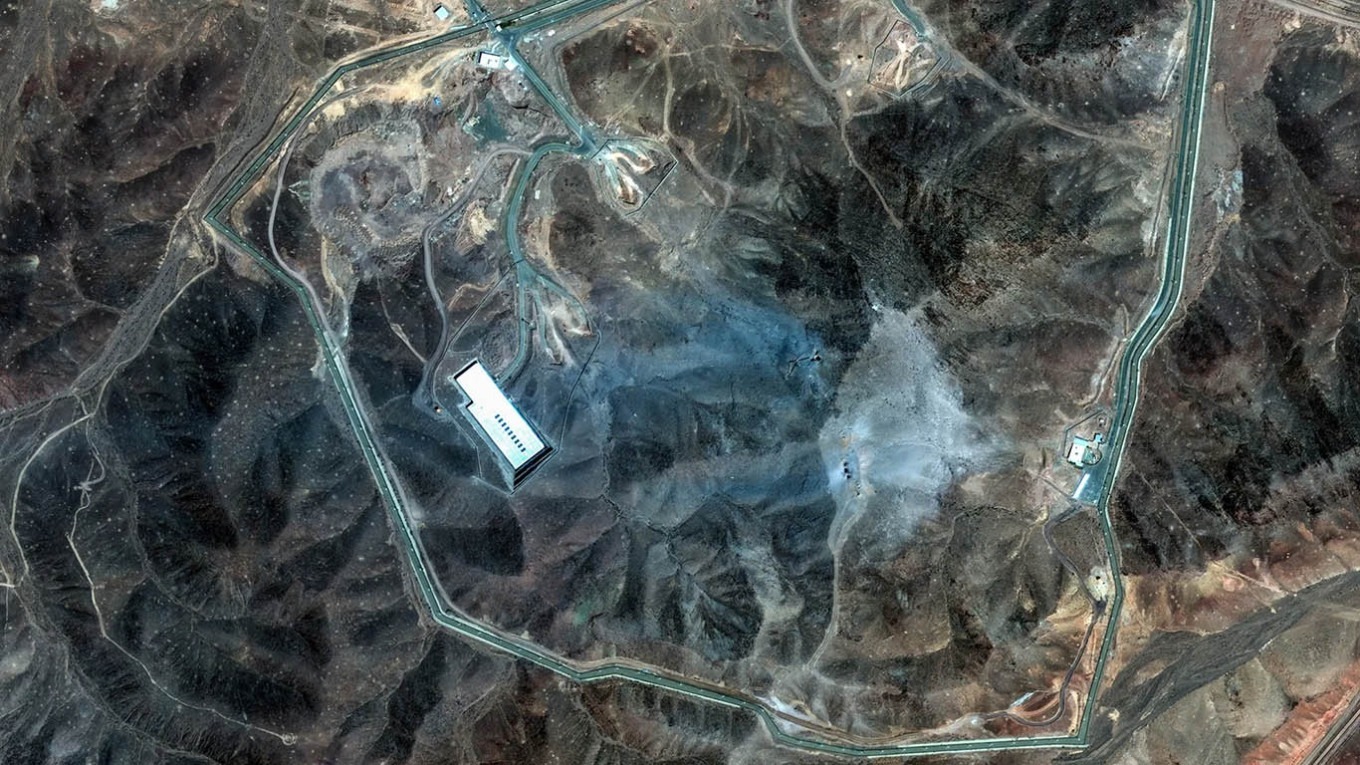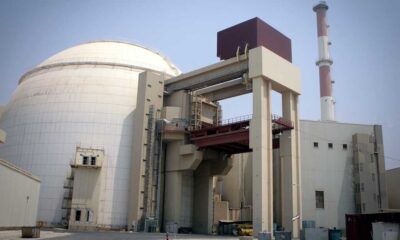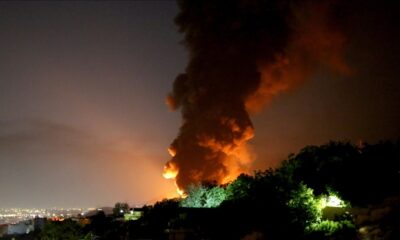Middle East
US says Israel informed after pager attack

Israel informed the United States on Tuesday of the attack in which explosives hidden in pagers were detonated, the Associated Press (AP) quoted a US official as saying.
The AR-924 pagers used in Tuesday’s attack were manufactured by BAC Consulting KFT in Budapest, Hungary, according to a statement by Taiwan’s Gold Apollo, which authorised the use of its brand name on the pagers.
BAC is suspected of being a shell company. No one has ever been seen at the BAC office in Budapest, Sputnik reported.
Gold Apollo chairman Hsu Ching-kuang told reporters on Wednesday that the company had a licensing agreement with BAC for the past three years.
The shell company registered in Hungary in May 2022
BAC Consulting, a limited liability company, was registered in May 2022, according to company records. The company has a share capital of €7,840 and generated revenues of $725,768 in 2022 and $593,972 in 2023, records show.
BAC is registered in the name of Cristiana Rosaria Bársony-Arcidiacono, who describes herself on her LinkedIn page as a strategic consultant and business developer.
Among other things, Bársony-Arcidiacono says on her page that she is on the board of the Earth Child Institute, a sustainability group. The group’s website does not list Bársony-Arcidiacono as a board member.
The battery life of the pager was the reason for its popularity in Lebanon
Experts believe the pagers were packed with explosives before delivery. According to the specifications advertised on Gold Apollo’s website before it was removed after the attack, the AR-924 pager, advertised as ‘rugged’, contains a rechargeable lithium battery.
The battery life was claimed to be up to 85 days. This is important in Lebanon, where power cuts are common after years of economic collapse.
The pagers also operate on a different radio network to mobile phones, making them more resilient in emergencies. This is one of the reasons why many hospitals around the world still rely on them.
Taiwan’s Ministry of Economic Affairs said Gold Apollo had exported 260,000 sets of pagers from early 2022 to August 2024, including more than 40,000 sets between January and August this year.
The ministry said there was no record of any direct export of Gold Apollo pagers to Lebanon.
How was the attack planned?
According to Lebanese security sources quoted by AP, Israel planted explosives in 5,000 pagers months before the deadly blasts.
A senior Lebanese security source said the Israeli spy service had implanted thousands of pagers with explosives activated by encrypted messages during production, months before they were imported by Hezbollah.
Some experts told AP that the explosions were most likely the result of interference in the supply chain.
Very small explosives could have been placed in the pagers before they were delivered to the Lebanese and then detonated remotely, possibly by radio signal, all at the same time.
Carlos Perez, director of security intelligence at TrustedSec, said that at the time of the attack ‘the battery was probably half explosive and half real’.
A former British Army bomb disposal officer explained that an explosive device has five main components: A container, a battery, a trigger, a detonator and an explosive charge.
“A pager already has three of these,” said the former officer, who spoke on condition of anonymity because he is currently advising clients in the Middle East. You just have to add the detonator and the explosive charge,” he said.
Magnier: The devices were delivered more than 6 months ago
Elijah J. Magnier, a Brussels-based journalist with more than 37 years’ experience in the region, said he had interviewed Hezbollah members and survivors of Tuesday’s pager attack and that the pagers had been supplied more than six months ago.
The pagers worked perfectly for six months,” Magnier said, adding that what triggered the explosion appeared to be an error message sent to all the devices.
Magnier also said that based on his conversations with Hezbollah members, many pagers did not explode, allowing the group to inspect them.
Magnier said they concluded that a highly explosive substance of between 3 and 5 grams had been hidden or embedded in the circuitry.
Middle East
US proposes $30 billion deal to Iran for halting uranium enrichment

The administration of US President Donald Trump is reportedly discussing the possibility of providing Iran with up to $30 billion in financial access to develop its peaceful nuclear program as part of efforts to return to negotiations with Tehran.
According to a CNN report citing sources familiar with the matter, this offer requires Tehran to completely halt uranium enrichment, a condition emphasized as “non-negotiable.”
Under the proposed plan, the funds would not be provided by the US but by Arab nations. An administration official stated, “The US is ready to lead these negotiations. Someone will have to pay for the implementation of the nuclear program, but we will not make such a commitment.”
Other proposals on the table
American officials have indicated that other offers are also being considered. These include the potential lifting of some sanctions against Iran and granting Tehran access to $6 billion of its frozen assets in foreign banks.
Another idea involves US allies in the Persian Gulf covering the cost of building new infrastructure to replace the Fordow nuclear facility, which was damaged in US attacks. This new facility would also lack uranium enrichment capabilities.
Washington’s “comprehensive peace” initiative
Steve Witkoff, Trump’s Special Representative for the Middle East, told CNBC that the US aims to achieve a “comprehensive peace agreement.”
A White House statement emphasized that all proposals are designed to prevent Iran from obtaining nuclear weapons.
Following the events of the past two weeks, which include mutual attacks with Israel and a US strike on Iran’s nuclear sites, the White House hopes Tehran will accept Washington’s terms.
Experts are skeptical, fearing the offer could backfire
Conversely, Iran experts cited by CNN believe these events will further convince the country’s leadership of the necessity of possessing nuclear weapons.
Earlier this week, the Iranian parliament approved the suspension of cooperation with the International Atomic Energy Agency (IAEA). Even before the US attack on the night of June 22, the Iranian government had already significantly restricted agency officials’ access to its facilities.
According to IAEA data from mid-May, Iran possessed approximately 409 kilograms of highly enriched uranium.
Bloomberg reported that this amount is theoretically sufficient to produce ten nuclear warheads. The agency’s Director General, Rafael Grossi, stated that the location of this material is unknown.
While Tehran claims it moved its uranium stockpiles from the attacked facilities beforehand, the IAEA assesses that a significant portion of the stocks may have survived the strike.
Middle East
US intelligence contradicts Trump’s claim of destroying Iran’s nuclear program

According to a classified military intelligence report obtained by CNN and the New York Times (NYT), US attacks on Iran’s three major uranium enrichment facilities did not eliminate the main components of Tehran’s nuclear program but only set it back by several months.
American officials who reviewed the report stated that the document, which includes a preliminary assessment of the 12-day war between Israel and Iran and the subsequent American attack, contradicts President Donald Trump’s declaration that the program was “completely destroyed.”
The report, prepared by the Pentagon, emphasized that the damage to Iran’s nuclear facilities was largely limited to the destruction of above-ground structures. It was determined that while the entrances to two underground facilities were filled with debris, the bunkers themselves remained intact.
Furthermore, it was reported that enriched uranium stockpiles might have been moved from the facilities before the attacks and that the centrifuges were “largely undamaged.” The report also noted that the US managed to damage the power grid of the nuclear facility built into a mountain at Fordo, but the facility itself did not sustain serious damage.
Timeline for a nuclear bomb extended
Before the military operation, US intelligence agencies estimated it would take Tehran at least three months to hastily produce a low-yield, primitive nuclear weapon. According to the NYT, military intelligence now predicts this timeline will extend to about six months.
The Times of Israel reported that Israeli intelligence also believes the US and Israeli attacks did not completely destroy Iran’s nuclear program, only setting it back “several years.”
Professor Jeffrey Lewis, an arms expert from the Middlebury Institute of International Studies, concurred with the US military intelligence assessment. According to Lewis, Iran could quickly rebuild its nuclear program using uranium stockpiles in the intact underground bunkers. The expert suggested that, in this scenario, it could take Iran five months to produce a nuclear bomb.
White House reacts strongly to leak
President Donald Trump had previously announced that the American attacks had resulted in the complete destruction of Iran’s nuclear facilities.
White House Spokesperson Karoline Leavitt, however, described the intelligence assessment cited by CNN and the NYT as “false.” Leavitt stated the document was classified and had been leaked to the press by a “low-ranking, unidentified loser.”
In a statement on the social media platform X, Leavitt remarked, “The leak of this so-called assessment is a blatant attempt to humiliate President Trump and discredit the brave fighter pilots who carried out a flawless mission to destroy Iran’s nuclear program. Everyone knows what happens when fourteen 30,000-pound bombs are precisely dropped on their targets: Total destruction.”
Trump also accused CNN and the NYT of collaborating to downplay one of the most successful military attacks in history. On his social media platform, Truth Social, Trump wrote, “The nuclear facilities in Iran have been completely destroyed!”
According to the NYT, the publication of the intelligence findings overshadowed President Trump’s victory at the NATO summit. The fact that the report was prepared by the Pentagon, which personally carried out the attacks, further underscored the situation’s significance.
Asia
US cries to China as Washington begins airstrikes in Iran

While the Middle East is going through one of its most tense periods, the world has been shocked by the news of a direct attack by the United States on Iran’s nuclear facilities. Washington has announced that Iran’s nuclear facilities no longer exist. At the same time, Tehran has warned in a strong tone that it will respond to this aggression.
This action was immediately met with widespread regional and international reactions. The United Nations, the European Union, global powers such as Russia and China, and America’s traditional allies in the West each took their own stance.
At an emergency meeting of the United Nations, Secretary-General Antonio Guterres described the move as a dangerous turn in an already crisis-ridden region. A wave of criticism has also emerged within the United States, with some describing the attack as successful.
At the same time, a number of lawmakers from both the Republican and Democratic parties consider Trump’s action to be without congressional authorization and unconstitutional.
Some reactions:
Russian envoy: US attack carried out without any provocation from Iran.
US Representative: The Iranian regime should not have nuclear weapons.
Iran’s ambassador to the Security Council: America once again sacrificed its security for Benjamin Netanyahu.
Israeli Ambassador to the Security Council: America changed the course of history by attacking Iran.
Rafael Grossi, the head of the International Atomic Energy Agency: Military attacks should not be carried out on nuclear facilities, saying he is ready to immediately travel to all countries regarding this case.
UK UN envoy: Military action alone cannot address concerns about Iran’s nuclear program, saying his country was not involved in Iran attack, referred to concerns about Iran’s nuclear program and said that military action alone cannot permanently address concerns about Iran’s nuclear program. He called on Iran to exercise restraint and urged the parties involved to return to the negotiating table.
France: Now is the time to end the attacks and return to negotiations.
But now why US cries to China for help to reopen Strait of Hormuz
Soon after a US airstrike in three locations, Iran closes the Strait of Hormuz, one of the world’s most important shipping routes. Now this move puts the US in trouble and US Secretary of State Marco Rubio has called on China to prevent Iran from closing the Strait of Hormuz.
However, it seems that the US is too late and according to Iran’s state-run Press TV, the decision was made by Iran’s Supreme National Security Council.
The US understands that any disruption on the supply of oil would have profound consequences for the economy and wants to play an emotional card with China to convince Iran to reopen the route as Beijing is also one of the largest buyers of Iranian oil.
It is reported that 20 percent of the world’s oil passes through the Strait of Hormuz, and major oil and gas producing countries in the Middle East use this route to export energy.
Meanwhile, US President Donald Trump has said that regime change is inevitable if the Islamic Republic cannot “make Iran great again.” His statement came following US military strikes on Iranian military facilities.
Iran: Game is not over even assuming the complete destruction of the nuclear sites
Ali Shamkhani, advisor to Ayatollah Ali Khamenei, the religious leader of Iran, has said in response to the US attacks that even assuming the complete destruction of the nuclear sites, the “game is not over”.
“Even assuming the complete destruction of the sites, the game is not over; because the enriched materials, indigenous knowledge, and political will remain intact,” he said.
He noted that “now the political and operational initiative with the right to self-defense is in the hands of the side that knows how to play smart and avoids blind shooting.”
-

 Middle East1 week ago
Middle East1 week agoUS to launch major bombing campaign against Iran this weekend, Hersh reports
-

 Middle East2 weeks ago
Middle East2 weeks agoIran targets Mossad and Unit 8200 in missile attack on Tel Aviv
-

 Middle East2 weeks ago
Middle East2 weeks agoIranian missile attack causes heavy damage across Israel
-

 Middle East2 weeks ago
Middle East2 weeks agoIran signals NPT withdrawal amid rising tensions with Israel
-

 Russia2 weeks ago
Russia2 weeks agoRussia alleges UK-Ukraine plot for false flag attack on US Navy in Baltic Sea
-

 Asia2 weeks ago
Asia2 weeks agoIran’s uranium enrichment program since 1979
-

 Diplomacy2 weeks ago
Diplomacy2 weeks agoChinese academic analyzes Israel-Iran conflict for Harici: Iran holds strategic importance for China
-

 Opinion2 weeks ago
Opinion2 weeks agoCan China Do More Than Condemn Israel?


















